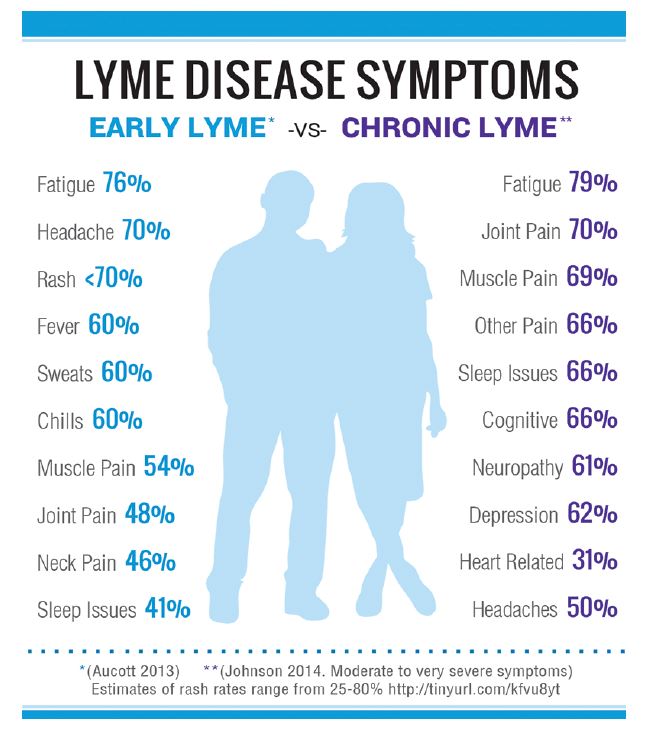In the Fall, we will still spend time outside and peak activity for adult deer ticks occurs in late October and early November. Of adults sampled in highly endemic areas of the northeast, 50% have been found to carry the Lyme disease spirochete. Lyme disease is spread by the bite of an infected tick, according to the Center for Disease Control and Prevention (CDC). The CDC estimates that in the United States, 300,000 infections of Lyme disease occur each year.
Symptoms
Early Lyme disease may present as flu-like symptoms (fever, chills, sweats, muscle aches, fatigue, nausea and joint pain). Some patients have a rash or Bell’s palsy (facial drooping). Although a bull’s-eye shaped rash is considered a characteristic symptom of Lyme disease, some will develop a different shape rash or none at all. Estimates of patients who develop a Lyme rash vary widely, ranging from about 30% to 80%.
LymeDisease.org has developed an online Lyme disease symptom checklist to help document exposure to Lyme disease and the prevalence of common symptoms; the checklist also generates a report that is useful to healthcare providers.
Two Stages of Lyme Disease
There are two stages of Lyme disease, early Lyme and chronic Lyme. If Lyme disease is not diagnosed and treated at an early stage, it may become late-stage or chronic Lyme. According to a recent survey with 5,000 responses, Lyme disease affects more than one body system, and patients with chronic Lyme disease report an average of three severe symptoms. Many Lyme symptoms, such as fatigue, cognitive impairment, joint pain, poor sleep, mood issues, muscle pain, and neurological presentations also occur in other diseases; misdiagnoses with a different condition (like depression, ALS, multiple sclerosis, etc.) before being properly diagnosed with Lyme disease, is an ongoing concern.
How to Find and Check for Ticks
Knowing where to expect ticks and how to perform daily tick checks is important, especially if you camp, hike, work, or play in wooded or grassy places. Black legged ticks, or the ticks that cause Lyme disease, live in moist and humid environments, according to the CDC. Walking in the center of trails and avoiding tall bushes and vegetation is a recommended way to avoid these ticks.
Using repellent that contains 20 percent or more DEET, picaridin, or IR3535 on exposed skin for protection that lasts several hours is the CDC’s recommendation for repelling ticks on skin and clothing.
Performing daily tick checks is important in catching and removing any tick you may find.
 Check your body for ticks after being outside, even in your own backyard. The CDC mentions several areas of the body to check for ticks:
Check your body for ticks after being outside, even in your own backyard. The CDC mentions several areas of the body to check for ticks:
- Under the arms
- In and around the ears
- Inside the belly button
- Back of the knees
- In and around all head and body hair
- Between the legs
- Around the waist
Always check your clothing and your pets for ticks, because they may carry
ticks into the house.
Further Reading:
CDC: Lyme disease
Med Express: 5 tips to keep you safe from ticks and Lyme disease
Please note that the information contained in this posting is designed to provide authoritative and accurate information, in regard to the subject matter covered. However, it is not provided as legal or tax advice and no representation is made as to the sufficiency for your specific company’s needs. This post should be reviewed by your legal counsel or tax consultant before use.

